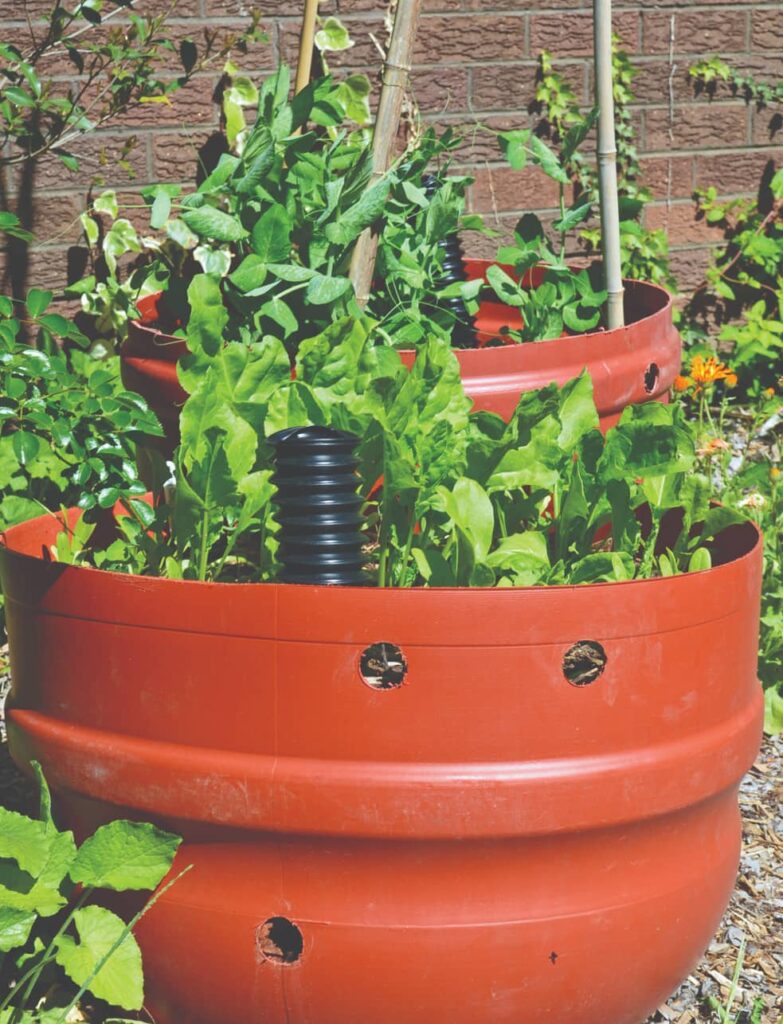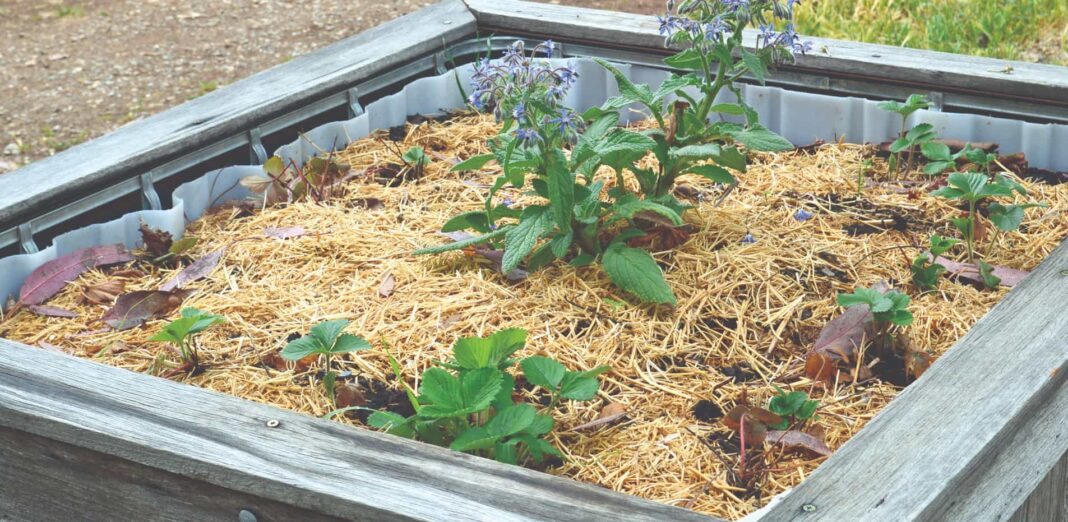Wicking beds are an increasingly popular growing system which hydrate plants using a wicking (capillary) action. Essentially, they are a self-watering pot. Wicking beds can be closed or open systems: closed systems can be above the ground or partly set into it; open systems are in-ground and open at one end for drainage. They are often sloped for improved drainage.
Wicking beds can be made from converted pots, tubs, raised beds or other containers – the options are practically endless. They contain an overflow outlet to prevent waterlogging and usually have a water reservoir and inlet pipe for efficient filling.
Wicking beds have many benefits, such as:
- Raised wicking beds are suitable for those who find conventional gardening methods difficult.
- They are versatile – can be situated on hard surfaces such as concrete, and are also useful for planting near established trees and when dealing with contaminated soils.
- They supply consistent moisture levels meaning bumper harvests and stress-free plants.
- They use half the water of conventional gardening styles. Having wicking beds means you can take short breaks without needing someone to water your garden.

Potting mediums for wicking beds need to be well-drained and resistant to compaction, therefore, avoid using clay soils.
Small-scale wicking beds and pots should be filled with premium standard potting mix and larger scale wicking beds can have up to 25% organic matter such as compost added. Top up potting mediums and replace potting mixes as for other gardening methods.
Wicking beds are watered through the inlet pipe (if they have one), to prevent surface evaporation and contamination/blocking of the reservoir. Shallow-rooted plants will require hand watering until established. Check out the following useful links on wicking beds: wickingbeds.com.au, greenlifesoil.com.au/sustainable-gardening-tips/wicking-beds
For more:



